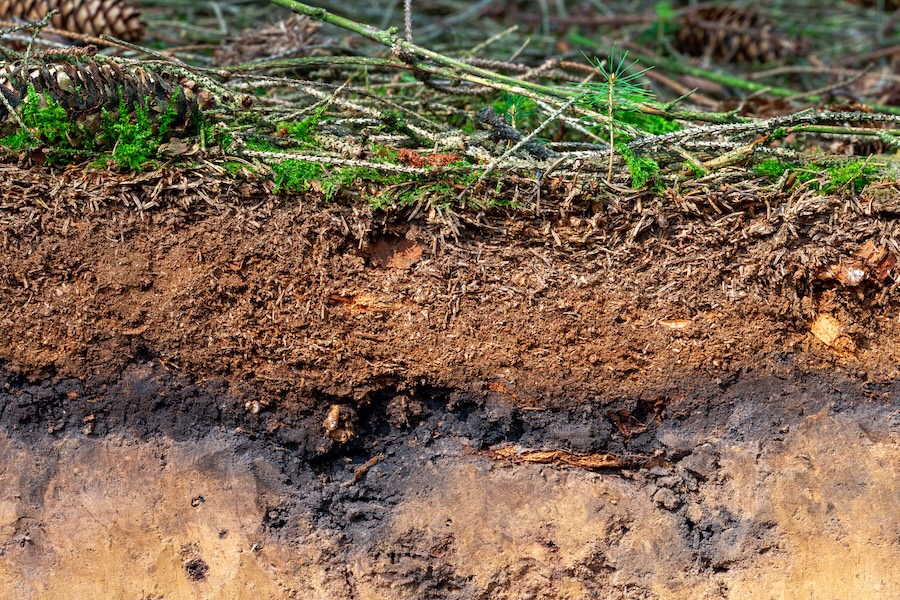This North American study tested the effects of whole-tree harvesting, trunk-only harvesting, and no harvesting on carbon storage in a spruce forest in Maine, USA. The study area consists of two adjacent watersheds with similar site conditions, species composition, and disturbance history.
Harvesting was carried out on one watershed in 1981. The other was left as an “uncut” reference in an advanced stage of succession. Fieldwork was conducted several times between 1979 and 2016 on 22 to 31 plots.
Thirty-five years after harvesting:
- The average carbon storage of living biomass was significantly lower for whole tree harvesting than for trunk-only harvesting on poorly drained soils, with no significant difference on moderately to moderately well-drained soils, and no significant difference for dead wood, forest floor, and mineral soil carbon.
- When including living biomass above stumps before harvest and forest soil carbon, the carbon storage of dead wood was significantly smaller after harvesting whole trees than after harvesting trunks alone, as was forest soil carbon on poorly drained soils, but not on moderately to well-drained soils.
- In 2016, the carbon storage of living biomass, dead wood, and forest soil in the harvested watershed recovered 62–67%, 38 to 39%, and 55 to 64% of the corresponding carbon pools for the unharvested area, while the mineral soil carbon pool was 115 to 124% of that of the unharvested area.
- The interpretation of carbon recovery is sensitive to the reference. Harvesting has left a long-term imprint on the landscape, with carbon in living biomass following a rapid recovery trajectory, while carbon pools in dead organic matter are recovering at a slower rate.


